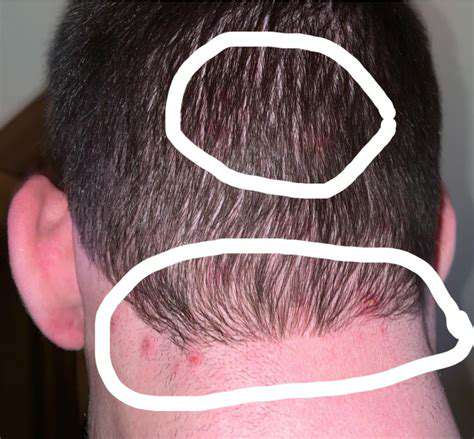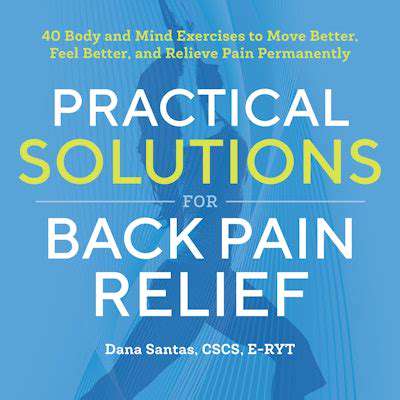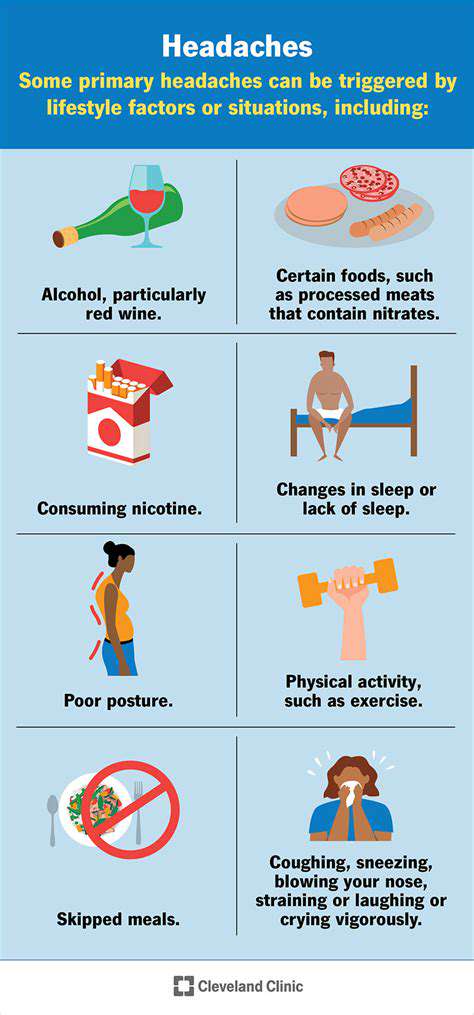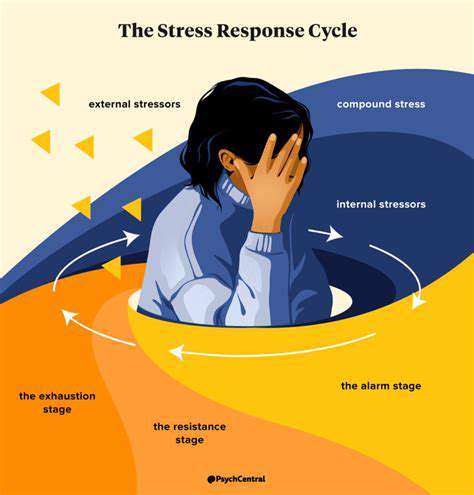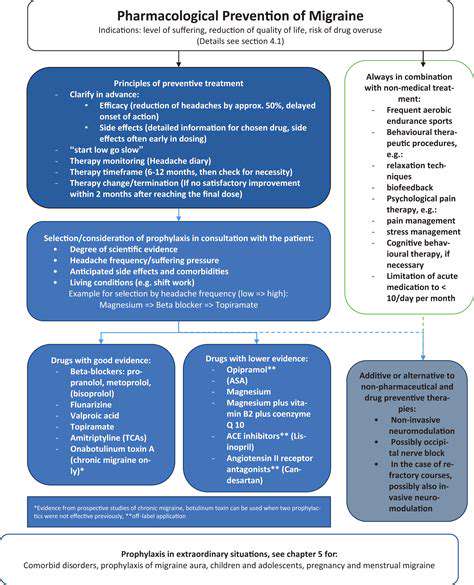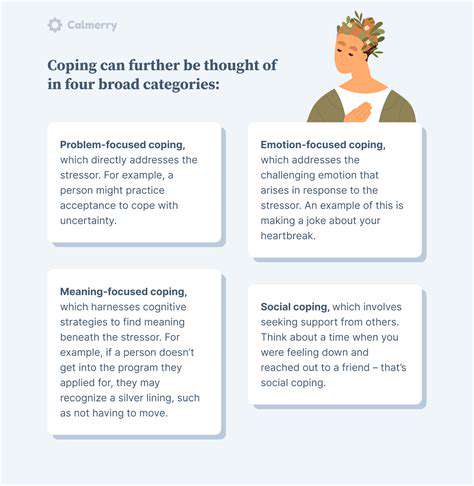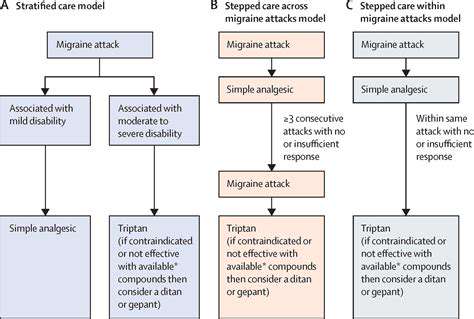Exploring the Role of Neurotransmitters in Headaches
Serotonin's Role in Pain Transmission
Serotonin, a crucial neurotransmitter, plays a complex role in pain signaling pathways. It's involved in modulating the transmission of pain signals from the periphery to the central nervous system. Dysregulation of serotonin systems can lead to altered pain perception, potentially contributing to the characteristic throbbing pain associated with migraines. Understanding the intricate dance between serotonin and pain is vital to developing effective migraine treatments.
Studies have shown that serotonin levels and activity are significantly altered during migraine attacks. This disruption in the serotonin system likely contributes to the amplification of pain signals, making them more intense and persistent.
Serotonin Receptors and Migraine
Serotonin interacts with various receptors in the brain and nervous system. Specific receptors, like 5-HT1B and 5-HT1D receptors, are particularly implicated in migraine pathophysiology. Dysfunction in these receptors could lead to a cascade of events that culminate in the migraine attack.
These receptors play a critical role in regulating vascular tone and modulating neuronal excitability. Disruptions in this regulatory mechanism likely contribute to the vasodilation and neuronal hypersensitivity observed during migraine attacks.
Serotonin and Trigeminal System
The trigeminal nervous system is a key player in migraine. Serotonin's influence on the trigeminal system is significant. It is believed that serotonin plays a critical role in regulating the activity of trigeminal neurons, influencing their firing patterns and sensitivity.
Dysregulation of serotonin in the trigeminal pathway could contribute to the activation of nociceptive pathways, leading to the characteristic pain and other symptoms associated with migraine.
Serotonin and Vascular Changes
Migraine is often characterized by vascular changes, including vasodilation and inflammation of blood vessels in the head. Serotonin is intricately involved in regulating vascular tone throughout the body. Dysregulation of serotonin levels or its interactions with vascular receptors could contribute to the observed vascular changes.
These changes in blood vessel diameter and inflammation likely play a critical role in the pain and other associated symptoms of migraine. Further research is needed to fully elucidate the relationship between serotonin and migraine-related vascular responses.
Serotonin and CGRP Release
Calcitonin gene-related peptide (CGRP) is another important molecule implicated in migraine. Research suggests that serotonin plays a crucial role in regulating the release of CGRP. Dysregulation of this interaction could lead to excessive CGRP release, contributing to the inflammatory and pain responses seen during migraines.
Serotonin Depletion and Migraine Attacks
Certain factors, such as stress, lack of sleep, and dietary changes, can lead to serotonin depletion. These factors could potentially trigger migraine attacks in individuals susceptible to this type of headache. Understanding how serotonin depletion can lead to migraines is crucial for developing preventative strategies.
Maintaining optimal serotonin levels through dietary adjustments and lifestyle modifications may help prevent or mitigate migraine attacks.
Treatment Strategies Targeting Serotonin
Many migraine treatments target serotonin receptors or pathways. Triptans, a class of medications, are frequently used to alleviate migraine pain and symptoms. These medications act on specific serotonin receptors. Understanding the precise role of serotonin in migraine pathophysiology is crucial for developing more effective and targeted treatment strategies.
Further research into serotonin-based therapies could lead to the development of innovative preventative and acute treatment options for migraine sufferers.
The Role of Substance P and Other Peptides in Headache Mechanisms
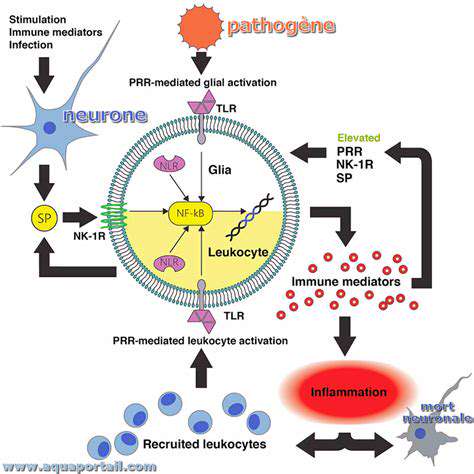
The Neurobiology of Substance P
Substance P, a neuropeptide, plays a crucial role in the transmission of pain signals within the nervous system. It's widely distributed throughout the body, particularly in sensory neurons and the central nervous system. Understanding its intricate interactions with other neurotransmitters and signaling pathways is essential for comprehending pain perception and its modulation.
Substance P's release is triggered by noxious stimuli, initiating a cascade of events that ultimately leads to the perception of pain. This release is not isolated, but rather part of a complex process involving a network of neurons and neurochemicals. The subsequent activation of pain pathways contributes to the experience of discomfort and potential tissue damage.
The Role of Substance P in Inflammation
Beyond its role in pain signaling, Substance P also contributes significantly to the inflammatory response. Its presence within inflammatory sites can stimulate the release of other inflammatory mediators, further exacerbating the local response. This amplification of the inflammatory cascade can lead to prolonged and potentially damaging tissue reactions.
The interplay between Substance P and other inflammatory mediators creates a complex feedback loop. This loop can be both beneficial, as it helps to eliminate harmful agents, and detrimental, as prolonged inflammation can lead to chronic pain conditions and tissue damage. Careful study of this interplay is critical to developing therapeutic strategies for inflammatory diseases.
Other Peptides Contributing to Pain Signaling
While Substance P is a prominent player, other neuropeptides such as calcitonin gene-related peptide (CGRP) and neurokinin A also contribute to the complex process of pain signaling. These peptides often act in concert with Substance P to amplify or modulate the pain response. Understanding their individual and combined effects is crucial for developing effective pain management strategies.
These peptides influence different aspects of pain perception, from the initial detection of noxious stimuli to the subsequent processing and modulation of the pain signal. Each peptide likely has unique roles within the pain pathway, and exploring these roles is critical for a comprehensive understanding of pain mechanisms.
Therapeutic Implications and Future Research
The intricate mechanisms of Substance P and other neuropeptides in pain signaling have significant implications for the development of new pain management strategies. Targeting specific components of these pathways could lead to the development of more effective and less invasive therapies for chronic pain conditions. This includes the potential for blocking or modulating the release or activity of these neuropeptides.
Further research into the precise roles of each peptide in different pain conditions could pave the way for personalized pain management approaches. This will involve studying the specific interactions between these neuropeptides and other signaling molecules, as well as their interactions with the nervous system in diverse pathological conditions.
